- عنوان کتاب: Graph Neural Networks: Essentials and Use Cases
- نویسنده: Pethuru Raj Chelliah, Pawan Whig
- حوزه: شبکه عصبی
- سال انتشار: 2025
- تعداد صفحه: 429
- زبان اصلی: انگلیسی
- نوع فایل: pdf
- حجم فایل: 5.92 مگابایت
الگوی شبکههای عصبی (NN) این روزها محبوبیت فزایندهای پیدا کرده است، زیرا به یک فناوری قدرتمند برای کشف الگوهای پنهان در مجموعه دادههای عظیم تبدیل شده است. بدون شک، مفهوم شبکه عصبی دگرگونکننده است و محققان در سراسر جهان مجموعهای از نوآوریها و تحولات را کشف و توضیح دادهاند. یکی از پیشرفتهای قابل توجه، ایجاد انواع مختلف شبکه عصبی عمیق (DNN) است. شبکههای عصبی کانولوشن (CNN) DNNهای برجستهای برای وظایف مربوط به بینایی کامپیوتر (CV) هستند. شبکههای عصبی بازگشتی (RNN) و انواع پیشرفته آنها DNNهایی هستند که وظایف پردازش زبان طبیعی (NLP) مانند تشخیص گفتار، ترجمه و تولید را خودکار میکنند. DNNها عمدتاً با دادههای اقلیدسی سروکار دارند. با این حال، دادههای غیراقلیدسی شامل توصیفات و تعاملات پیچیده آیتمها معمولاً در نمودارها کدگذاری میشوند. کاربردهای خاص باید به دادههای غیراقلیدسی بپردازند. این انگیزه اصلی برای پذیرش پدیده شبکههای عصبی گراف (GNN) است، یک قدرت دگرگونکننده که شما را الهام میبخشد و مجذوب خود میکند. شبکههای عصبی مصنوعی (GNN) یک مدل یادگیری عمیق (DL) قدرتمند هستند که با دادههای ساختار یافته گراف کار میکنند. یک گراف شامل گرههایی است که نقاط داده منفرد را نشان میدهند و لبههایی که روابط یا ارتباطات بین آن گرهها را نشان میدهند. چندین نوع GNN وجود دارد، مانند شبکههای کانولوشن گراف (GCN)، شبکههای توجه گراف (GAT) و شبکههای بازگشتی گراف (GRN). GCNها میتوانند با نگاه عمیق به یک گره و همسایگانش، از ساختار گراف یاد بگیرند – GCNها اطلاعات را از گرههای همسایه جمعآوری میکنند تا نمایش گره را بر اساس آن بهروزرسانی کنند. اعمال CNN بر دادههای گراف از نظر محاسباتی چالش برانگیز است زیرا توپولوژی زیربنایی دلخواه و پیچیده است. هیچ مکان مکانی و ترتیب گره ثابتی وجود ندارد. GATها مکانیسم توجه بسیار محبوبی را معرفی میکنند که به مدل اجازه میدهد هنگام جمعآوری اطلاعات، روی همسایگان خاص تمرکز کند. یعنی برخی از همسایگان سهم بیشتری در کار مورد نظر دارند. GRNها اصول RNNها را با ساختارهای گراف ترکیب میکنند. GNNهای مبتنی بر مکانی و طیفی وجود دارند. موارد استفاده از GNNها: موارد استفاده پیشرفتهای مانند طبقهبندی گره، پیشبینی پیوند، خوشهبندی گراف، تجسم و طبقهبندی، تشخیص ناهنجاری، سیستمهای توصیه، پردازش زبان طبیعی (NLP)، پیشگیری از حمله خصمانه و بینایی کامپیوتر وجود دارد. GNNها در پیشبینی سرعت ترافیک، حجم یا تراکم جادهها در شبکههای ترافیکی نقش دارند. شیمیدانان میتوانند از GNNها برای تحقیق در مورد ساختار گراف مولکولها یا ترکیبات استفاده کنند. GNNها در مسائلی مانند تأیید و استدلال برنامه، پیشبینی تأثیر اجتماعی، مدلسازی سوابق سلامت الکتریکی (EHR) و شبکههای مغزی نقش دارند.
این کتاب چندین تغییر را برای رفع ابهام از فناوریها و ابزارهای توانمند GNN در خود جای داده است. کاربردهای صنعتی، کسبوکارها و موارد استفاده مختلف به طور دقیق برای توانمندسازی خوانندگان ما شرح داده شدهاند. محققان هوش مصنوعی و نظریه گراف، جزئیاتی در مورد آخرین روندها و تحولات کشف شده در فضای GNN دریافت خواهند کرد و اطمینان حاصل میکنند که شما بهروز و آگاه هستید. چند فصل کاربردی در این کتاب گنجانده شده است تا توضیح دهد که چگونه GNNها قدرتمند و پیشگام در حوزههای مختلف صنعت هستند. این کتاب راهنمایی برای مهندسان هوش مصنوعی و دانشمندان داده است. آخرین پیشرفتهای هوش مصنوعی مولد، هوش مصنوعی عاملگرا و هوش مصنوعی فیزیکی، به طور قابل توجهی توسط بداههپردازیهای متمایز بیان شده و برجسته شده در فضای GNN، تقویت خواهند شد.
The paradigm of neural networks (NNs) has gained surging popularity these days as it has turned out to be a powerful technology for unearthing hidden patterns in massive datasets. Undoubtedly, the neural network concept is transformative, with worldwide researchers unearthed and expounded a series of innovations and disruptions. One noteworthy advancement is forming different deep neural network (DNN) types. Convolutional neural networks (CNNs) are prominent DNNs for tasks related to computer vision (CV). Recurrent neural networks (RNNs) and their advanced variants are DNNs that automate natural language processing (NLP) tasks such as speech recognition, translation, and generation. The DNNs mainly deal with Euclidean data. However, non-Euclidean data comprising complex item descriptions and interactions is typically coded in graphs. Specific applications need to tackle non-Euclidean data. This is the key motivation for adopting the graph neural networks (GNN) phenomenon, a transformative power that will inspire and intrigue you.
GNNs are a powerful deep learning (DL) model that works with graph-structured data. A graph consists of nodes representing individual data points and edges representing the relationships or connections between those nodes. There are a few GNN variants, such as graph convolutional networks (GCN), graph attentional networks (GAT), and graph recurrent networks (GRN). GCNs can learn from the graph structure by deeply looking at a node and its neighbours—GCNs aggregate information from the neighbouring nodes to update the node’s representation accordingly. Applying CNN to graph data is computationally challenging as the underlying topology is arbitrary and complicated. There is no spatial locality and an unfixed node ordering. GATs introduce the hugely popular attention mechanism that allows the model to focus on specific neighbours when aggregating information. That is, some neighbours contribute more to the task at hand. GRNs combine the principles of RNNs with graph structures. There are spatial and spectral-based GNNs.
The Use Cases of GNNs: There are advanced use cases such as node classification, link prediction, graph clustering, visualization and classification, anomaly detection, recommendation systems, NLP, adversarial attack prevention, and computer vision. GNNs contribute to forecasting traffic speed, volume, or the density of roads in traffic networks. Chemists can use GNNs to research the graph structure of molecules or compounds. GNNs contribute to problems such as programme verification and reasoning, social influence prediction, electrical health records (EHR) modelling, and brain networks.
This book has incorporated several changes to demystify the enabling GNN technologies and tools. Various industrial applications, businesses, and use cases are meticulously delineated to empower our readers. AI and graph theory researchers will get details on the latest trends and transitions being unearthed in the GNN space, ensuring that you are up-to-date and knowledgeable. A few practical chapters are stuffed in this book to explain how GNNs are powerful and pioneering across industry verticals. This book is a guide for AI engineers and data scientists. The latest developments of generative AI, agentic AI, and physical AI are to be significantly emboldened by the distinct improvisations articulated and accentuated in the GNN space.
این کتاب را میتوانید از لینک زیر بصورت رایگان دانلود کنید:



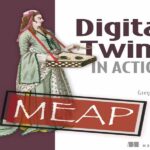


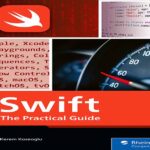



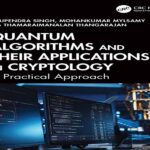

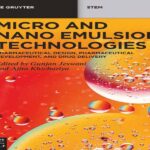
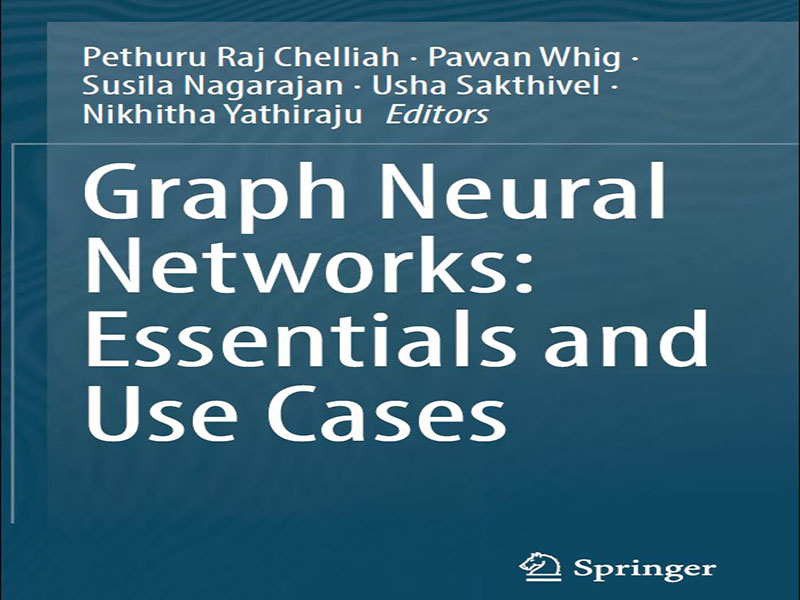






















نظرات کاربران